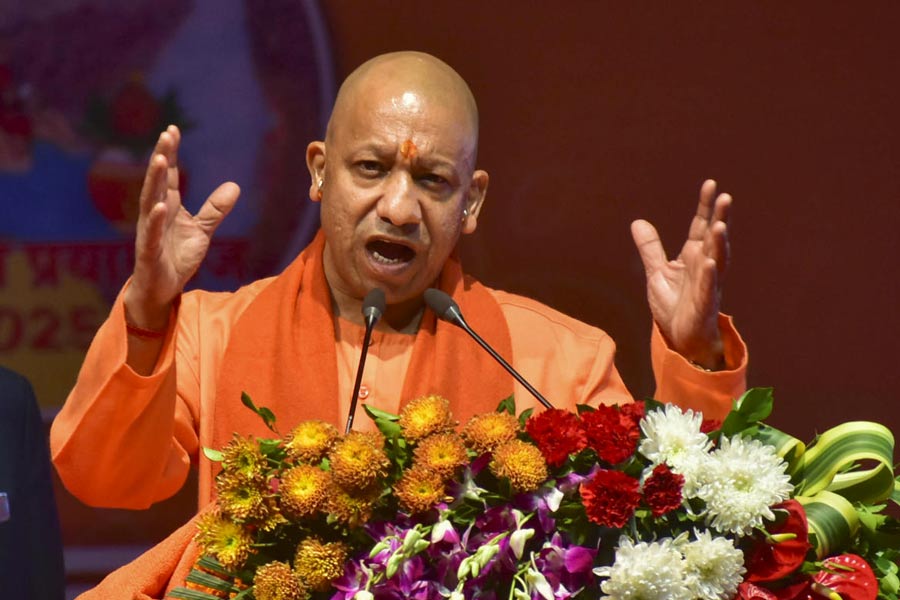Every time I would drop by her Broad Street residence for an interview, which would more often be a straight-from-the-heart adda lasting hours, she would be seated on one particular intricately carved wooden chair in her home studio, nestling her cup of tea, and urging me to munch on the carefully laid-out platter of snacks in front of me.
The chat would essentially be followed up with a lunch, often cooked by her with keen care for my preferences. Hospitable, humble and immensely talented — that was Sharbaridi for me, whom the world knew as the legendary menswear designer Sharbari Datta.
Rightfully credited to have introduced the Indian man to the world of fashion, Datta started her journey in designing rather informally in 1991 with a small exhibition that received unexpected commercial success. One exhibition led to another and the Sharbari brand was born. The first Indian fashion brand that solely focussed on men’s clothing.
“I always felt that Indian men were very inhibited when it came to dressing up. Due to the colonial hangover, the British influence, we always considered grey, pale blue or navy blue as the masculine colours that make for smart outfits. But nowhere else is it so. Be it Japan or Africa or Afghanisthan or Pakistan… the men always dress in bright colours… so are they feminine? I wanted to prove that there’s no clash between masculinity and bright colours. Our Indian tradition in menswear is of bright colours and nakshas. So why have we ignored it completely? A three-piece suit is not the only fashion statement for an Indian man. He can also make a statement in traditional Indian clothes,” she had told The Telegraph in an earlier interview, when asked about her bold decision to tread uncharted territory.
With hand-embroidery over hand-sketched motifs that drew inspiration from rustic and folk cultures as the mainstay, the Sharbari Datta school of design became the go-to for the Calcutta man for his wedding outfit, who even dared to don the brightly coloured dhoti that she introduced, breaking the norm of the beige or white piece of traditional drape.
Not just Calcutta, her unique aesthetics drew men from all parts of the country — from Ismail Merchant (among her first celebrity clients) to Sunil Gavaskar, Imran Khan, Sachin Tendulkar, Shoaib Akhtar, Sourav Ganguly, Leander Paes to Abhishek Bachchan and many other Bollywood and Tollywood stars, they have all proudly worn a Sharbari creation.
But the artist in her was always that wee bit more excited when somebody from the art world would choose to wear her creations.
“I feel extra special when artists buy my work. Since I consider my work as artwear, I have felt that my work has been certified when people like M.F. Husain, Ganesh Pyne, Manjit Bawa, Paresh Maity and Bikash Bhattacharya have bought my clothes,” Datta had told us. Datta was the daughter of famous poet Ajit Datta.
Showcasing her work in exhibitions across the world and winning innumerable awards — including The Telegraph She Awards in the Creative Art category in 2016 — Sharbari became a name to reckon with in the Indian fashion fraternity.
Conquering the world from her home studio, she resolutely refused to expand into other areas of design, keeping her focus firmly on menswear for the most part of her career. “I have always refused to diversify into other areas. I have always been very focussed.
Menswear is a very difficult area because men are difficult to deal with when it comes to fashion. Most of them are rigid and not adventurous. Women are much more open and receptive, so that’s a much easier area,” she would tell us.
In 2017, Datta distanced herself from her brand Sharbari Studio, which she co-owned along with her son Amalin Datta and daughter-in-law Kanaklata Datta. She launched another brand called Shunyaa, along with partners, making the signature Sharbari aesthetics its design DNA. With an opulent store in Hindusthan Park, Sharbari had built a new world for herself.
But for me, the picture of Sharbaridi that would remain forever etched in my heart would be of her sitting on that intricately carved wooden chair in her home studio, nestling her cup of tea while chatting her heart out.










